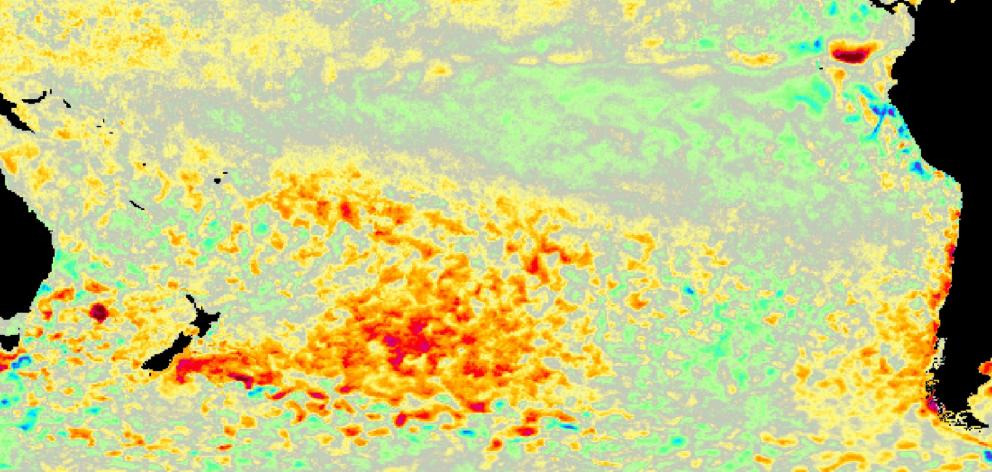
It sounds like something out of a horror movie, but it actually exists.
Researchers at Victoria University of Wellington, Universidad de Chile and Meteorologica de Chile have discovered a pool of unusually warm water (unaffectionately called “The Blob”) off the east coast of New Zealand, which is believed to be responsible for a 10-year mega-drought in parts of South America.
They believe it is generated by recent climate change, and research shows it has shifted storm systems towards the Antarctic and away from the west coast of South America, causing a decade-long, uninterrupted sequence of drought years across central Chile and adjacent portions of the Andes Mountains and Argentina.
It has been termed the Central Chile Mega-drought, given its unprecedented longevity.
Victoria University of Wellington School of Geography, Environment and Earth Sciences lecturer and research co-author Dr Kyle Clem said it was unclear when, or if, The Blob would dissipate, given it had formed as a result of human-induced climate change.
It covers about 8 million sq km and was only discovered after studying the year-after-year drought conditions in central South America, and the strong, continuous warming of upstream ocean waters in the South Pacific.
Dr Clem said computer models, which did not account for anthropogenic greenhouse gas emissions, managed to replicate The Blob and show a connection to a decline in convection in the central tropical Pacific.
“It is clear that winter storm systems, which deliver the majority of annual rainfall in this Mediterranean climate, were moving south towards Antarctica and being replaced with a large ridge of warm and dry high pressure, extending from New Zealand to the central South American coast.
“The Blob has blocked winter storms from reaching the subtropical west coast of South America, a region that relies on these storms to replenish freshwater sources before the summer dry season.
“This mega-drought has dwindled freshwater supplies across central Chile, affecting drinking water in rural communities, hydro-generation, agriculture, and many other activities in a highly populated area that includes the capital city of Santiago.”
He said in some years, rainfall had been as low as 30% of normal, and rainfall figures show 2021 would be another very dry year.
“What our study shows is that, with human-induced climate change, what happens in one place does not necessarily stay there.
“The Southern Blob, though likely natural in its formation, has reached extreme levels of warming due to increasing greenhouse gases, with cascading effects on the climate system across the southern hemisphere affecting millions of people, seemingly far-removed geographically from the source,” he said.
Comments
A study published in the Lancet last week estimates that deaths linked to extreme heat and cold have climbed over the past few decades and are likely to only increase in the years to come. In 2019, they estimate that more than 1 million people died as a result of unsafe temperatures.
Between 1980 and 2016, it is estimated that deaths linked to heat rose by 74% worldwide, while deaths linked to extreme cold rose by 31% from 1990 to 2016. In 2019, based on their modeling, they further estimated that there were 1.7 million deaths linked to extreme weather. Broken down, about 1.3 million of these deaths were tied to the cold, and more than 300,000 to the heat. Despite this disparity, extreme heat in already hot areas far surpassed the average burden of cold.
Without drastic efforts taken to curb carbon dioxide and other greenhouse emissions now, the impacts of climate change will exponentially worsen in the next few decades. These impacts will undoubtedly include many more killed by the ravages of extreme weather.












